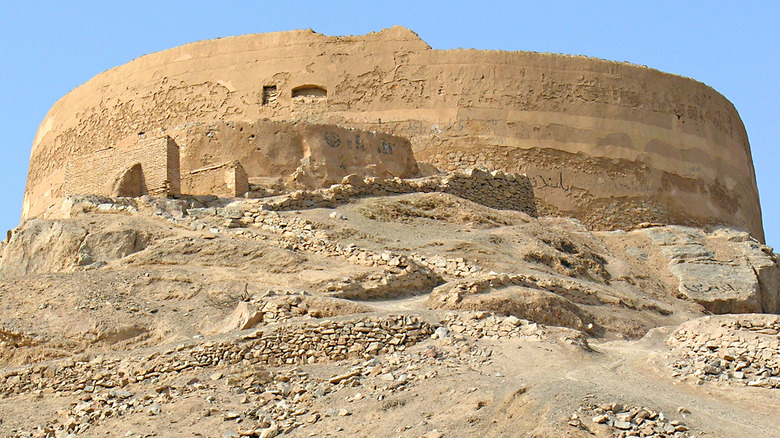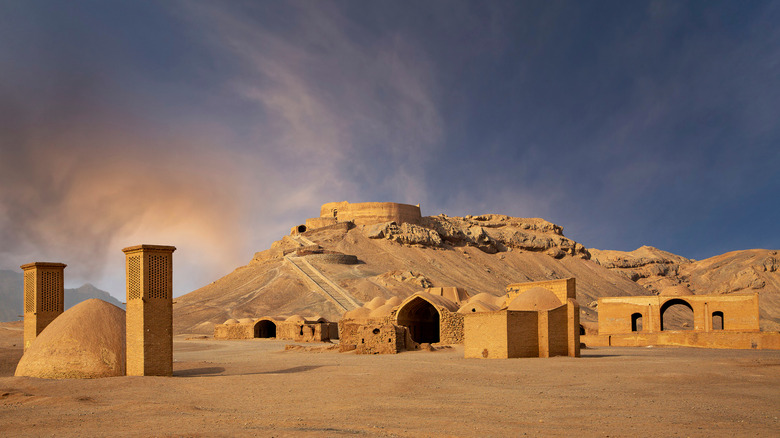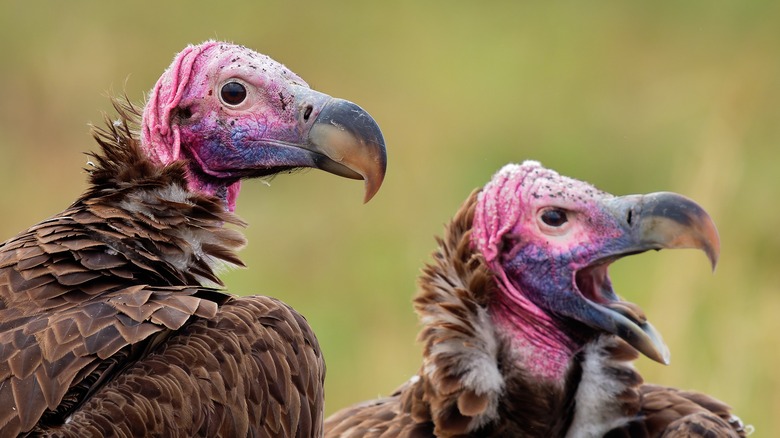What Is A Tower Of Silence?
A dakhma, also known as a Tower of Silence, is a roofless circular building that appears commonplace from the outside. But what's inside is actually a part of a longstanding ritual that has caused controversy for many years.
As The Guardian reports, this practice dates back more than 3,000 years. Ancient Persians began the practice around 900 A.D., and in some places, Towers of Silence are still being used today.
According to Zoroastrian religious beliefs, bodies "become impure at death," as Slate reports. It is thought that the dead bodies can attract evil demons that will attack the soul of the deceased and could also harm the living. The body is taken away from the living as soon as possible to avoid this. Only certain workers are permitted to be around corpses, and the bodies are otherwise isolated.
People in Parsi communities surrounding the Towers of Silence in Iran will remove the clothes from the deceased, and lay them on one of three rings on the ground inside the Tower of Silence. Atlas Obscura reports that there is a hierarchy to the body placement: men's bodies are placed on the outer ring, women in the middle ring, and children in the center.
A 'clean death'
Inside the roofless cylinder, vultures are free to fly inside and eat the flesh from the dozens of dead bodies. Once the bones have been picked clean, they dry out in the sun, and are either collected by local workers or disintegrate due to weather conditions.
These sky burials in the Towers of Silence are an excellent way to accomplish a "clean death." Instead of allowing the body to rot and decay, animals will eat the flesh down to the bones in a matter of days or even hours; there have been reports of vultures stripping a corpse clean in just 30 minutes. Carrion animals, like vultures, consume only meat from dead beings. This is an efficient way to dispose of a body in a way that honors Zoroastrian religious beliefs, and also feeds local wildlife in the process (via Atlas Obscura).
But in the 1970s, Iran cracked down on the funeral practice, saying it was a health hazard. Though many places banned dakhmas, sky burials are still practiced in Mumbai, India.
What's killing the wildlife?
But aside from health concerns, there is another reason that sky burials don't work as well as they used to. That's because vulture populations have been pushed out of their natural habitats due to land development. At the same time, around the late 1900s, vultures began dying after eating the carcasses of cows that had been treated with a medication called Diclofenac, reports The Guardian. Diclofenac was banned in 2006, but it was too late — up to 95% of the vulture population had died.
Without vultures to consume the bodies, the sky burial practice took a grim turn. A journalist and photographer snuck into a Tower of Silence and took photos showing that bodies were piling up without vultures to eat them (via The Guardian). There was a lot of discussion among locals as to how to handle this new problem. One controversial option was adding solar concentrators to the Towers, in order to use natural sunlight to reflect concentrated beams of heat onto the bodies to speed up their decomposition (via The Guardian). In recent years, vulture breeding programs have also resulted in a slight population increase.
Most people have simply stopped practicing sky burials. As Atlas Obscura reports, families in Iran now prefer to bury their deceased loved ones beneath concrete.


